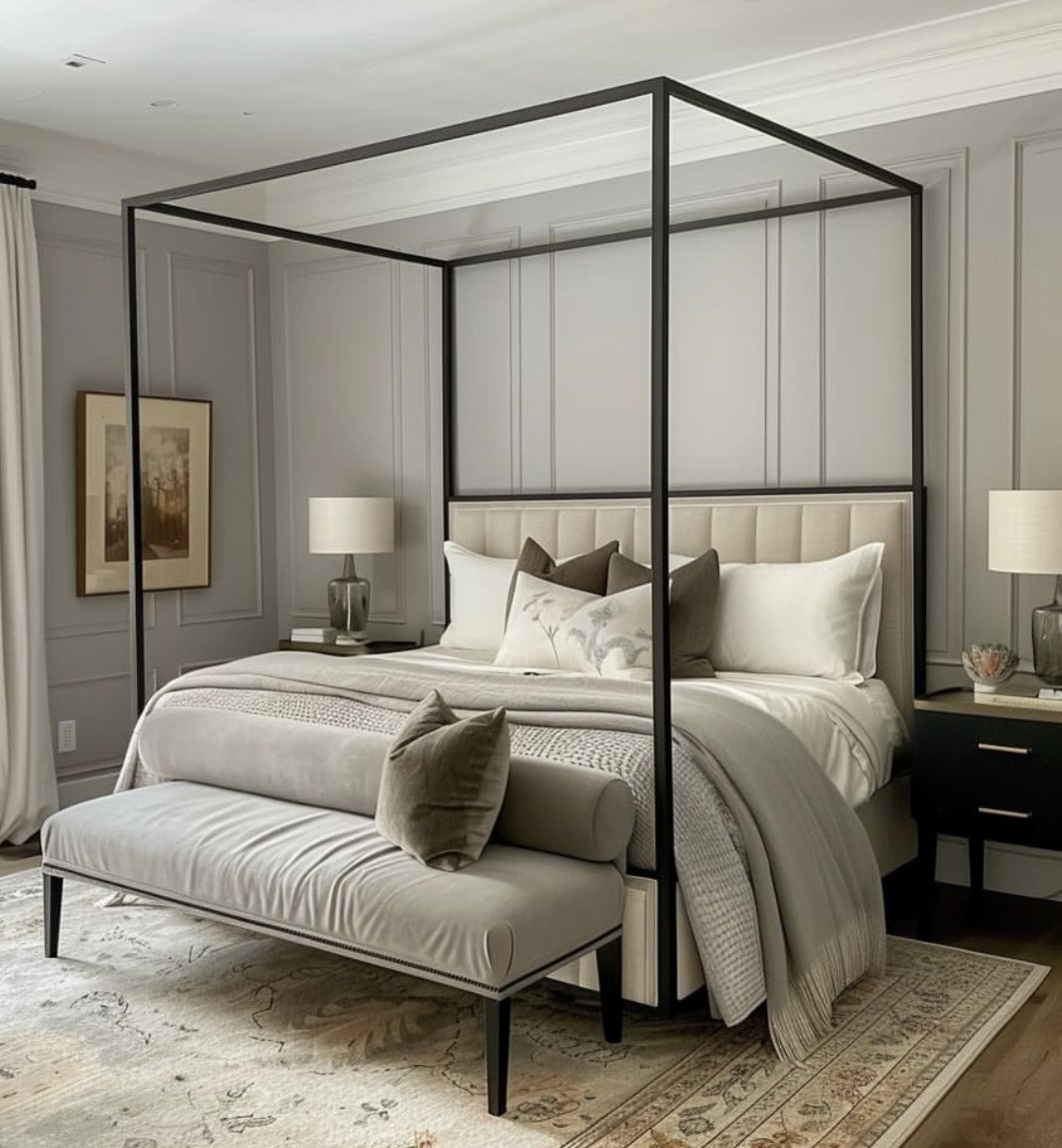LAYERING INTERIORS
Layering in Interior Design: Crafting Depth and Dimension
The key to creating a rich, characterful interior lies in the art of layering. But what exactly does layering mean in the context of design, and how can you master it? Layering in interior design is an art form that combines elements, textures, and finishes to create a space that feels cohesive, inviting, and richly detailed. At its core, layering is about balance and contrast, ensuring every component of the design harmonizes while offering visual interest. Let’s explore the building blocks of a layered space and understand how each contributes to the overall effect.
Building Blocks of a Layered Space
Colour Palette
Base Elements
Functional Layers
Decorative Layers
Accents and Accessories
Lighting
Each of these elements plays a distinct role in defining the mood, functionality, and aesthetic of a room. Here’s a closer look at how to use these layers effectively:
COLOUR PALETTE
Every new design starts with a colour palette, this should be cohesive and …
2. Base Elements
The base elements form the foundation of the design. These include flooring, walls, ceilings, and large pieces of furniture such as sofas or beds. These elements often set the tone for the space through their materials, colours, and finishes. It’s important to think about the placement of furniture to create depth. For example, in a larger bedroom can you split the space into two defined areas, one for sleeping and one with a sofa area for relaxation?
Walls and Ceilings: Choose a neutral or bold base colour to anchor the design. Consider textural treatments like paneling, wallpaper, or exposed brick to add depth.
Flooring: Hardwood, tiles, or carpets establish the room's underlying tone. Layering can begin here with rugs to add warmth or pattern.
Large Furniture: Select staple pieces in classic shapes or neutral tones that can act as a blank canvas for further embellishment.
3. Functional Layers
Functional layers include items that serve practical purposes but also contribute to the room’s aesthetic. Curtains, rugs, and built-ins often fall under this category.
Window Treatments: Blinds, curtains, and shutters provide privacy and light control. Opt for textures like linen or velvet to add sophistication.
Rugs: Rugs can delineate spaces and add softness. Layering rugs—placing a smaller patterned rug over a larger neutral one—can introduce both texture and dimension.
Built-ins and Shelving: These offer storage while acting as a backdrop for decorative items.
This formal living area uses all these elements to create a cohesive and beautiful space by combining foundational pieces, functional additions, and decorative accents in a way that balances texture, scale, and colour. The thoughtful layering of rugs, textiles, and furniture adds depth, while carefully selected lighting enhances the atmosphere and highlights key features. By weaving these elements together, the design achieves both harmony and character, making the space feel inviting and refined.
4. Decorative Layers
Decorative layers bring personality and interest to the design. These include artwork, pillows, and statement furniture pieces. Use them to add depth and texture.
Artwork and Wall Decor: Art adds a focal point. Group smaller pieces in a gallery wall for variety or use a single large piece for impact.
Throw Pillows and Textiles: Mix patterns and textures in complementary colours to enhance the visual appeal of seating or beds.
Statement Pieces: A unique chair, a bold coffee table, or a sculptural lamp can become the highlight of the space.
This bedroom uses a paneling to add depth and a statement bed as it’s foundational piece. The chaise and textiles are added as decorative accents in a way that again balances texture, scale, and colour.
5. Accents and Accessories
Accents and accessories are the finishing touches that make a space feel lived-in and complete. This includes vases, books, and plants.
Plants and Greenery: Adding plants introduces organic texture and colour.
Books and Trinkets: Display curated items on coffee tables or shelves to reflect personal style.
Mirrors and Metallics: Mirrors enhance light and create the illusion of space, while metallic accents provide a touch of luxury.
6. Lighting
Lighting is both functional and atmospheric, tying all the layers together.
Ambient Lighting: Ceiling lights and chandeliers provide general illumination.
Task Lighting: Table lamps, floor lamps, and under-cabinet lights enhance specific activities.
Accent Lighting: Spotlights, LED strips, or wall sconces highlight architectural features and decor.
Layering Light Sources: Combine different types of lighting to create a dynamic, multi-dimensional effect.
Layering in interior design is about creating a story through thoughtful curation of elements. By understanding and applying the principles of base, functional, decorative, and accent layers, alongside strategic lighting, you can craft interiors that are both visually stunning and deeply personal. Whether designing a tranquil retreat or a vibrant social hub, layering offers endless possibilities to transform a house into a home.


